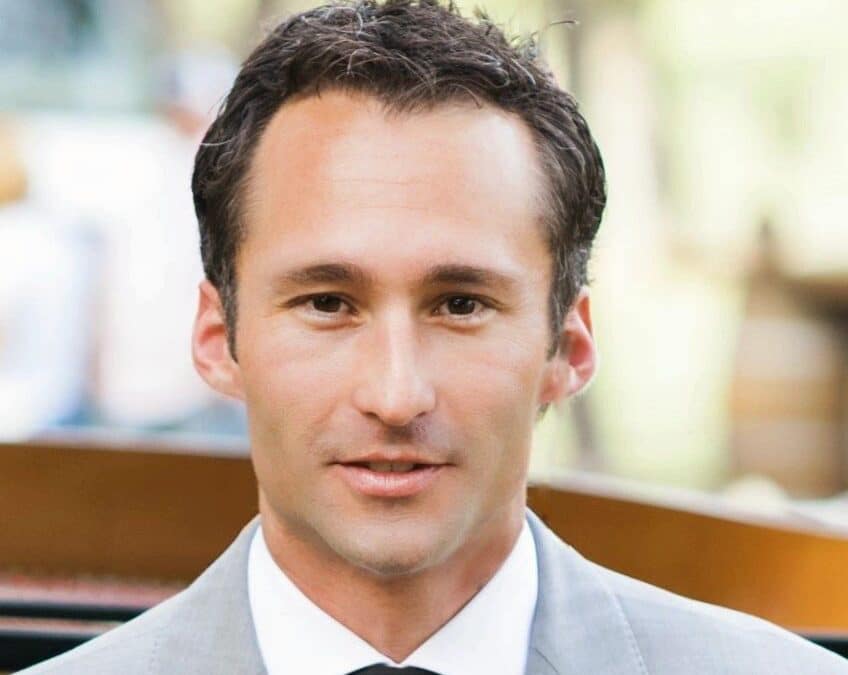The most successful businessman in the golf industry also keeps the lowest profile. Meet Brian Verdugo – the visionary behind golf’s GPS curtain. Chances are, most of those GPS range finders, watches, simulators and even battery-powered trollies you use, owe their techno existences to Verdugo, a soft-spoken, 40-something who enjoys flying, boating and golf.
Verdugo’s companies – iGolf and SyncWise – is the database software engines used by companies to create the mapping for nearly 40,000 golf courses in 150 different countries. Companies such as Blue Tees, Rad Golf,Rapsodo, USGA, TruGolf and Yamaha golf cars, are among those that count on iGolf software to map everything from tee boxes to greens to bunkers.
Verdugo benefitted from the influences of his grandfather, Robert Hoffman, – a businessman, pilot and concert pianist – during his childhood visits to his grandparents’ home in Walnut Creek, CA.
“My grandfather was my number one role model,” said Verdugo, who developed a passion for flying and for being innovative because of this relationship. “He was Chief Engineer and then Vice President at the Bell Company, which post-divesture became Pacific Bell in 1984. “”My grandfather had so many talents and abilities. He dedicated his entire life to working for one company – the Bell Company. He started climbing telephone poles, went to World War II, then on to UC Berkely for an Electrical Engineering degree on a G.I. Bill, eventually climbing the ladder very quickly and did quite well.
“I loved hearing about the Bell Company, but at the same time, because of the things I got to learn from him – and by building things from the ground up at his house – all led me to think: ‘I want to be successful like he was, but I also want to do it on my terms.’’’
A piece of Hoffman’s more memorable advice to his grandson?
“‘Go build your own company and have a lot of fun,’’’ Verdugo said. “So, I followed his advice, did just that and I have never looked back.’’
Robbery Hoffman’s grandson definitely is a forward thinker and innovator.
Over the past 20 years, Verdugo has guided iGolf into a brand that is specifically focused on providing the golf technology sector with advancements in software, hardware, and GPS content. The company has invested heavily in adding new intellectual property to its portfolio including radar-based launch monitor technology, laser range finder sensors, trolley and golf car intelligence, 3D elevation terrain on 23,000-plus courses and virtual reality environments for the gaming sector. More than 65 licensees, including Fortune 500 companies, rely on iGolf’s technology to bring advanced products into the hardware, software, and mobile sectors.
SyncWise, meanwhile, focused on developing integrated wireless control systems primarily for the Low-Speed Vehicle (LSV) automotive electric vehicle market. At the core, SyncWise – founded in 2017 – believes LSV’s will provide a greater role in the transition to autonomous vehicles, particularly in densely populated areas such as cities, planned communities and campus environments as a last-mile solution.
By developing an enterprise platform that integrates cameras, radar, lidar (Light Detection and Ranging), IMUs (Inertial Measurement Units), preprocessed position data and electric motor control units on a secure 5G wireless network, Verdugo believes SyncWise is well positioned for growth in the autonomous electric vehicle industry.
A third component to the quietly-growing empire – Location Capital – is a family office fund founded by Verdugo. Location Capital is primarily focused on investing in disruptive technologies in mobile communications, location-based services, and autonomous intelligence.
iGolf and SyncWise each operate under the Location Capital Umbrella. Pixels Matter, a leading technology developer for the location-based and cellular-connected device industries, serves as the research and development arm for Verdugo’s companies.
“Bushnell acquired our work force group in 2007 and immediately became customer No. 1 one for licensing our data,’’ said Verdugo, who holds a Bachelor of Arts in Economics from San Diego State University. “We’ve built up all the products they’ve had in their road map for the past 15 years. Wingman being the most successful.
“Slowly but surely we took on more licensees and customers. We have different hardware brands that license our maps and IP. In turn, we help them get to market as quickly as possible with what I consider better technology than if they went at it on their own.’’
All this current tech was built from the most simplistic of origins.
“Twenty years ago, we had to collect scorecards,’’ Verdugo said. “We entered each one into a system. I think we still have the images of those scorecards.
“It took a long time to build (the database) and as needs changed, we added things like trees and bunkers. So, we have to continue to build different types of maps to be able to extract the data
“Now we touch a couple of thousand courses per month, where we are always changing something. We try to get to every single course in the world every two years.’’
Golf simulator companies, in particular, are beginning to take notice of iGolf’s technological databases.
“They use our mapping for ‘real time’ playing on courses all over the world,’’ Verdugo said. “I think we’ll continue to see the segment that use our database grow.’’
On the subject of growth, Verdugo said iGolf is investing heavily in terrain data, which gives accurate representation of a golf course’s topography.
“Our customers can use that in a lot of different areas,’’ Verdugo said. “I think the simulator model is going to be the biggest growth for us in the next couple of years.
“We haven’t really focused much on agronomy, but I think with better terrain data, there will be more interest from irrigation companies, in terms of where they can really model where water goes and how much water is needed in certain areas.’’
Better terrain information blends seamlessly into iGolf’s newest platform – Insight – that Verdugo describes as the “metrics behind’’ understanding swing and launch data.
“The characteristics of the swing.. you talk about ball speed, launch angle and club head speed. It all means something on a course. We want to be able to give more tools – more on an enterprise level than consumer level – that allow companies – and individuals on that level – to input what your parameters are in a golf swing and what would actually help for what you’re trying to accomplish. What does that ball do? What’s it going to look like?
“So, we invested heavily the past couple of years in the algorithms of these models. We’re looking at the drag coefficient. What does the ball do in the air? If the ball is spinning at 3300 RPM and it has ‘left one degree,’ what is that ball characteristic going to do?
“To take it one step farther, when you put that information on our terrain data, I can tell you on the first hole of your golf course, what that ball is going to go when it hits the ground.
“The terrain data is really important, but now we’re getting into some of the physics models, so we can go back to our customers and ask them to ask their customers, ‘What is your ball speed?’ they will learn a lot more about their golf games because of the data that comes out of that.’’
And that’s a peak behind the curtain.
#igolf #syncwise #brianverdugo #gps #golftechnology #roberthoffman #usga #thebellcompany #bluetees #golfinnovators #golfbusiness #spikeongolfandtravel
Photo: Brian Verdugo (iGolf)

